-
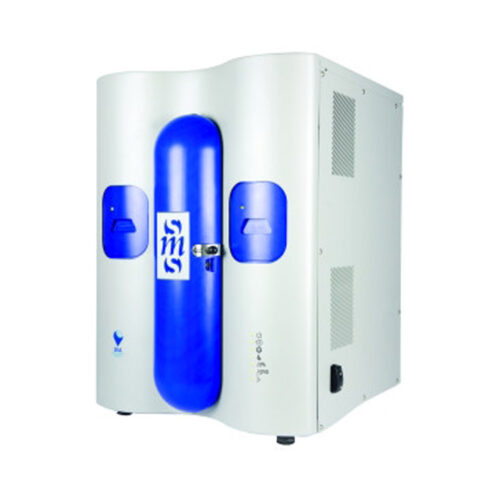 The Inverse Gas Chromatography-Surface Energy Analyzer or iGC-SEA continues Surface Measurement Systems’ pioneering history with inverse gas chromatography (IGC). The iGC-SEA is a second generation Inverse Gas Chromatography instrument. It is the only commercial instrument based on IGC principle. The unique SMS injection scheme provides a wide range of injection concentrations with high accuracy and reproducibility.
The Inverse Gas Chromatography-Surface Energy Analyzer or iGC-SEA continues Surface Measurement Systems’ pioneering history with inverse gas chromatography (IGC). The iGC-SEA is a second generation Inverse Gas Chromatography instrument. It is the only commercial instrument based on IGC principle. The unique SMS injection scheme provides a wide range of injection concentrations with high accuracy and reproducibility. -
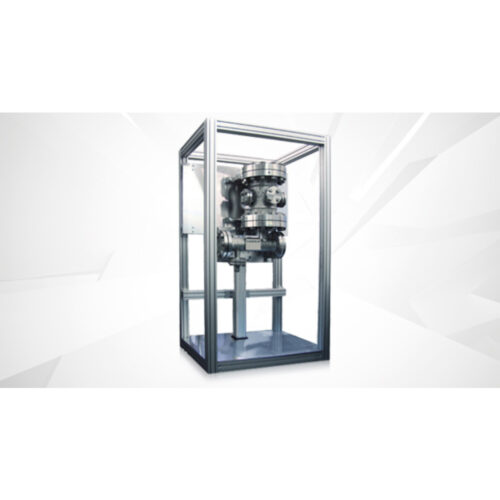 The LINSEIS High Pressure STA ( High pressure Tg-DSC) delivers unsurpassed performance. The system can be used to determine simultaneous changes of mass (TG) and caloric reactions (HDSC) under defined atmosphere and high pressure (up to 50/150 bar) in the temperature range -170°C up to 1800°C. This instrument is unique because it is the only available high pressure TG-DSC worldwide. The unique characteristics of this product are high precision, high resolution and long term drift stability. The high pressure STA Platinum Series was developed to meet the challenging demands of the high temperature and high pressure applications. Main Application of High Pressure Thermogravimetry-Differential Scanning Calorimetry:
The LINSEIS High Pressure STA ( High pressure Tg-DSC) delivers unsurpassed performance. The system can be used to determine simultaneous changes of mass (TG) and caloric reactions (HDSC) under defined atmosphere and high pressure (up to 50/150 bar) in the temperature range -170°C up to 1800°C. This instrument is unique because it is the only available high pressure TG-DSC worldwide. The unique characteristics of this product are high precision, high resolution and long term drift stability. The high pressure STA Platinum Series was developed to meet the challenging demands of the high temperature and high pressure applications. Main Application of High Pressure Thermogravimetry-Differential Scanning Calorimetry:- Pyrolysis Studies
- Gasification of Coal and Biomass
- Testing of Getter Materials (O2, H2, etc.)
- Metal reduction / oxidation studies
-
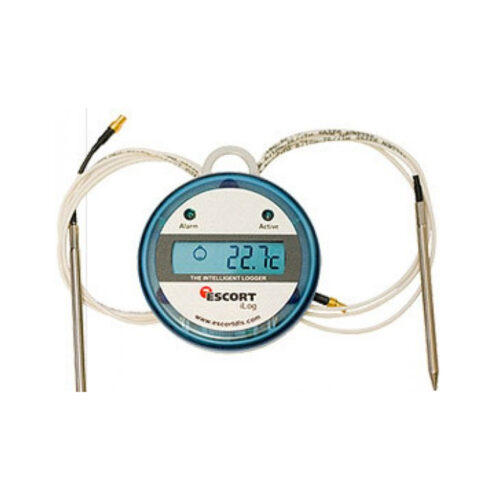
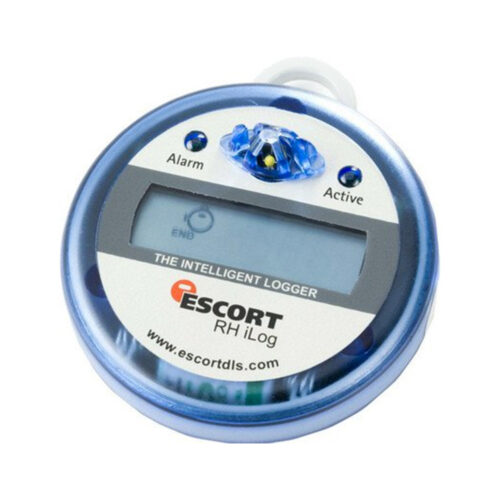 We have a whide variaty of sensors, loggers/recorders for temperature and humidty. Digital temperature data logger with display Escort MINI is a self-sufficient data logger that measures temperature. To start logging, a brief pressure on start button is enough. A large LCD display provides log information and alarm status. Escort MINI’s enclosure is made of ABS plastic and has an optional internal or external probe. The internal memory logs up to 1868 readings, with a sample rate from 1 up to 255 minutes. iLog is a self-powered temperature data logger. An excelent resolution of 0,1ºC along with a high accuracy of ±0,3ºC gives the iLog the capability to detect and to log the smallest variations of temperature. A large LCD display and external indicators provide log information and alarm status. The internal memory logs up to 32000 readings, with a sample rate from 1 second up to 10 days.
We have a whide variaty of sensors, loggers/recorders for temperature and humidty. Digital temperature data logger with display Escort MINI is a self-sufficient data logger that measures temperature. To start logging, a brief pressure on start button is enough. A large LCD display provides log information and alarm status. Escort MINI’s enclosure is made of ABS plastic and has an optional internal or external probe. The internal memory logs up to 1868 readings, with a sample rate from 1 up to 255 minutes. iLog is a self-powered temperature data logger. An excelent resolution of 0,1ºC along with a high accuracy of ±0,3ºC gives the iLog the capability to detect and to log the smallest variations of temperature. A large LCD display and external indicators provide log information and alarm status. The internal memory logs up to 32000 readings, with a sample rate from 1 second up to 10 days. -
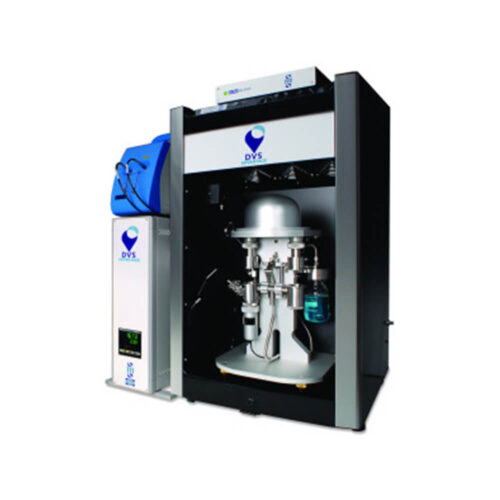 Dynamic Vapor Sorption (DVS) is a gravimetric technique that measures how quickly and how much of a solvent is absorbed by a sample. It does this by varying the vapor concentration surrounding the sample and measuring the change in mass loss or uptake. Water vapor is most commonly used, but it is also possible to use a wide range of organic solvents. The DVS instrument rapidly measures uptake and loss of moisture or organic vapours by flowing a carrier gas at a specified relative humidity over a sample (which can weigh between 1 mg and 4 g) suspended from the weighing mechanism of an ultra-sensitive recording microbalance. This particular microbalance is used as it is capable of measuring changes in sample mass lower than 0.1ppm , providing unrivalled long-term stability required for accurate measurements of vapour sorption, which may take from minutes to days to complete depending upon the sample size and material. A big factor of sorption behaviour is the need to establish rapid sorption. So the DVS instrument allows sorption behaviour to be accurately determined on very small sample sizes (typically 10 mg) to have a fast expiriment.
Dynamic Vapor Sorption (DVS) is a gravimetric technique that measures how quickly and how much of a solvent is absorbed by a sample. It does this by varying the vapor concentration surrounding the sample and measuring the change in mass loss or uptake. Water vapor is most commonly used, but it is also possible to use a wide range of organic solvents. The DVS instrument rapidly measures uptake and loss of moisture or organic vapours by flowing a carrier gas at a specified relative humidity over a sample (which can weigh between 1 mg and 4 g) suspended from the weighing mechanism of an ultra-sensitive recording microbalance. This particular microbalance is used as it is capable of measuring changes in sample mass lower than 0.1ppm , providing unrivalled long-term stability required for accurate measurements of vapour sorption, which may take from minutes to days to complete depending upon the sample size and material. A big factor of sorption behaviour is the need to establish rapid sorption. So the DVS instrument allows sorption behaviour to be accurately determined on very small sample sizes (typically 10 mg) to have a fast expiriment. -
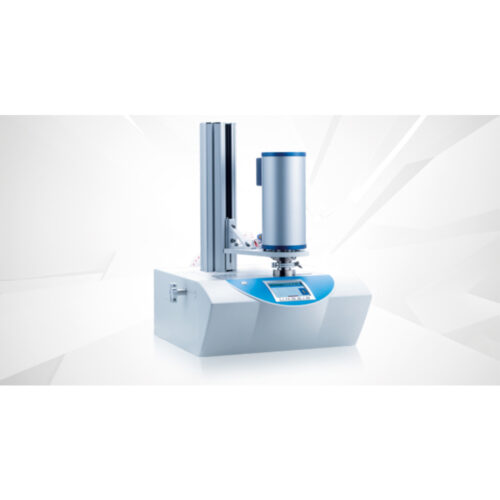 The Differential Thermal Analysis is the most common thermal analysis method due to its wide range of information provided. The Linseis high temperature DTA PT 1600 is designed to deliver highest calorimetric sensitivity, short time constants and a condensation free sample chamber. These features guarantee superior resolution and baseline stability over the entire instrument lifetime. Thus providing a indispensable tool for material development, R&D and quality control. All Linseis Differential Thermal Analyzers (DTA) comprise the advantages of latest technology, highest resolution and a robust easy to use instrument design.
The Differential Thermal Analysis is the most common thermal analysis method due to its wide range of information provided. The Linseis high temperature DTA PT 1600 is designed to deliver highest calorimetric sensitivity, short time constants and a condensation free sample chamber. These features guarantee superior resolution and baseline stability over the entire instrument lifetime. Thus providing a indispensable tool for material development, R&D and quality control. All Linseis Differential Thermal Analyzers (DTA) comprise the advantages of latest technology, highest resolution and a robust easy to use instrument design. -
 Differential Scanning Calorimetry (DSC) is the most common thermal analysis method due to its wide range of information provided. The LINSEIS high temperature DSC PT 1600 (HDSC/DTA) is designed to deliver highest calorimetric sensitivity, short time constants and a condensation free sample chamber. These features guarantee superior resolution and baseline stability over the entire instrument lifetime. This provides an indispensable tool for material development, R&D and quality control. The modular concept of the HDSC and DTA systems allows the use of different furnaces with a temperature range from -150°C up to 1750°C. The vacuum tight design enables quantitative enthalpy and Cp (Specific Heat) determination under the cleanest atmospheres and under vacuum of 10E-5mbar. The systems can be upgraded with an optional sample robot and coupled to a MS or FTIR. Measuring System: User friendly exchangeable measureing systems such as a DTA Sensor and two different DSC Sensors are available. Each DSC Sensor is available as type E, K, S, B for the DSC PT 1600. This allows the perfect chioce for any application, temperature or atmosphere.
Differential Scanning Calorimetry (DSC) is the most common thermal analysis method due to its wide range of information provided. The LINSEIS high temperature DSC PT 1600 (HDSC/DTA) is designed to deliver highest calorimetric sensitivity, short time constants and a condensation free sample chamber. These features guarantee superior resolution and baseline stability over the entire instrument lifetime. This provides an indispensable tool for material development, R&D and quality control. The modular concept of the HDSC and DTA systems allows the use of different furnaces with a temperature range from -150°C up to 1750°C. The vacuum tight design enables quantitative enthalpy and Cp (Specific Heat) determination under the cleanest atmospheres and under vacuum of 10E-5mbar. The systems can be upgraded with an optional sample robot and coupled to a MS or FTIR. Measuring System: User friendly exchangeable measureing systems such as a DTA Sensor and two different DSC Sensors are available. Each DSC Sensor is available as type E, K, S, B for the DSC PT 1600. This allows the perfect chioce for any application, temperature or atmosphere. -
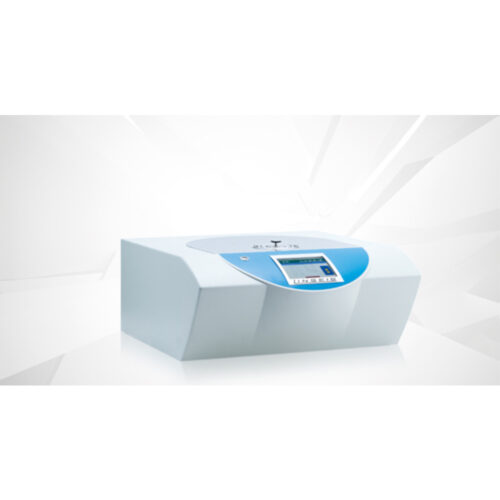 The DSC PT 1000 was developed to provide a general purpose TM – DSC with a broad temperature range (-180 – 600°C) for all common applications. Furthermore emphasis was placed on an extremely stable baseline and high reproducibility. The design allows manual and automatic operation. The conception of the cell guarantees maximum mechanical and chemical resistance. The key part of every DSC is the sensor, so don’t make any compromise. Up to now it has been impossible to achieve highest resolution and sensitivity in one sensor. The revolutionary design of the HiperRes® Sensor line now enables just that. The Ceramic/Metal Sensor deliver outstanding resolution in combination with superior reproducibility.
The DSC PT 1000 was developed to provide a general purpose TM – DSC with a broad temperature range (-180 – 600°C) for all common applications. Furthermore emphasis was placed on an extremely stable baseline and high reproducibility. The design allows manual and automatic operation. The conception of the cell guarantees maximum mechanical and chemical resistance. The key part of every DSC is the sensor, so don’t make any compromise. Up to now it has been impossible to achieve highest resolution and sensitivity in one sensor. The revolutionary design of the HiperRes® Sensor line now enables just that. The Ceramic/Metal Sensor deliver outstanding resolution in combination with superior reproducibility. -
 The Smartchem 600 combines the latest technology in discrete analysis with an innovative and unique design that guarantees accurate and reproducible results. The Smartchem range is the first discrete analyzers to utilize washable cuvettes with an integrated wash and control station, which guarantee a lower running cost and reduced risk of contamination. In addition to automated analysis the Smartchem 600 offers automated system Quality Control. The Smartchem range is also the first discrete analyzers to utilize a patented, dedicated sample prep module for the determination of NOx by Cadmium reduction. Designed for multi-tasking and high throughput rates, the NOx module also provides automated cadmium regeneration. The instrument provides also a pH, Conductivity and Redox module. Fully automated, the Smartchem 600 is available with new user-friendly software designed for touch screen computer with the possibility of wireless control. Ease of use combined with minimal operating condition requirements make the Smartchem 600 the right choice for every cost-efficiency laboratory.
The Smartchem 600 combines the latest technology in discrete analysis with an innovative and unique design that guarantees accurate and reproducible results. The Smartchem range is the first discrete analyzers to utilize washable cuvettes with an integrated wash and control station, which guarantee a lower running cost and reduced risk of contamination. In addition to automated analysis the Smartchem 600 offers automated system Quality Control. The Smartchem range is also the first discrete analyzers to utilize a patented, dedicated sample prep module for the determination of NOx by Cadmium reduction. Designed for multi-tasking and high throughput rates, the NOx module also provides automated cadmium regeneration. The instrument provides also a pH, Conductivity and Redox module. Fully automated, the Smartchem 600 is available with new user-friendly software designed for touch screen computer with the possibility of wireless control. Ease of use combined with minimal operating condition requirements make the Smartchem 600 the right choice for every cost-efficiency laboratory. -

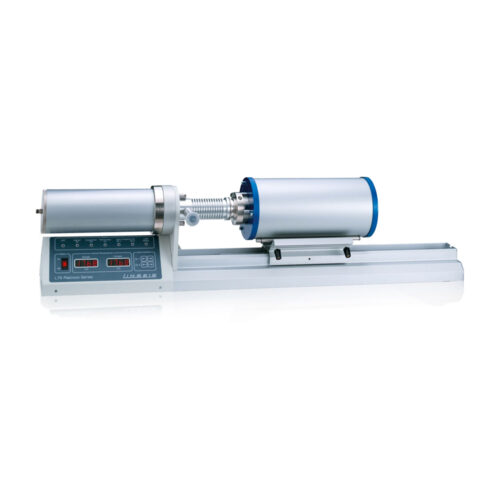 Dilatometry DIL is a technique in which a dimension of a substance under negligible load is measured (e.g. expansion measurement or shrinkage measurement) as a function of temperature while the substance is subjected to a controlled temperature program in a specified atmosphere. Linseis produces a wide range of Single-, Dual-, Differential-, Quattro-, Quenching-, Laser- and Optical Dilatometer in a temperature range from -180°C up to 2800°C and a resolution up to 0.3 nm. Thanks to our years of experience (est. 1953), Linseis offers Dilatometers with an unbeaten performance.
Dilatometry DIL is a technique in which a dimension of a substance under negligible load is measured (e.g. expansion measurement or shrinkage measurement) as a function of temperature while the substance is subjected to a controlled temperature program in a specified atmosphere. Linseis produces a wide range of Single-, Dual-, Differential-, Quattro-, Quenching-, Laser- and Optical Dilatometer in a temperature range from -180°C up to 2800°C and a resolution up to 0.3 nm. Thanks to our years of experience (est. 1953), Linseis offers Dilatometers with an unbeaten performance. -
 The Differential Thermal Analysis DTA is the most common thermal analysis method due to its wide range of information provided. The Linseis high temperature DTA PT 1600 is designed to deliver highest calorimetric sensitivity, short time constants and a condensation free sample chamber. These features guarantee superior resolution and baseline stability over the entire instrument lifetime. Thus providing a indispensable tool for material development, R&D and quality control. All Linseis Differential Thermal Analyzers (DTA) comprise the advantages of latest technology, highest resolution and a robust easy to use instrument design.
The Differential Thermal Analysis DTA is the most common thermal analysis method due to its wide range of information provided. The Linseis high temperature DTA PT 1600 is designed to deliver highest calorimetric sensitivity, short time constants and a condensation free sample chamber. These features guarantee superior resolution and baseline stability over the entire instrument lifetime. Thus providing a indispensable tool for material development, R&D and quality control. All Linseis Differential Thermal Analyzers (DTA) comprise the advantages of latest technology, highest resolution and a robust easy to use instrument design. -
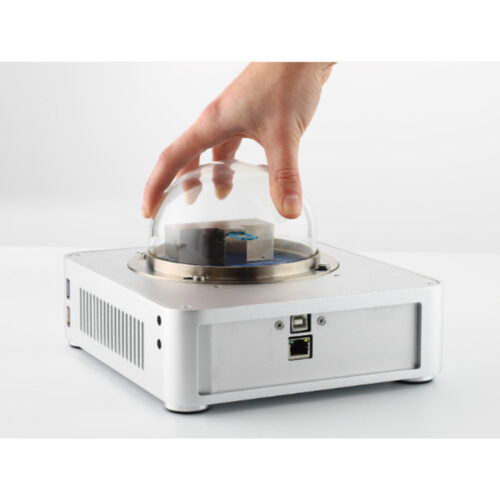
 The all new Chip DSC-sensor integrates all essential parts of DSC, furnace, sensor and electronics in a miniaturized housing. The chip-arrangement comprises the heater and temperature sensor in a chemically inert ceramic arrangement with metallic heater and temperature sensor. This arrangement allows superior reproducibility and due to the low mass outstanding temperature control and heating rates of up to 300°C/min. The integrated sensor is easily user exchangeable and available for a low cost. The integrated design of the chip-sensor delivers superior raw data, which enables a direct analysis without pre- or post-processing of heat flow data.
The all new Chip DSC-sensor integrates all essential parts of DSC, furnace, sensor and electronics in a miniaturized housing. The chip-arrangement comprises the heater and temperature sensor in a chemically inert ceramic arrangement with metallic heater and temperature sensor. This arrangement allows superior reproducibility and due to the low mass outstanding temperature control and heating rates of up to 300°C/min. The integrated sensor is easily user exchangeable and available for a low cost. The integrated design of the chip-sensor delivers superior raw data, which enables a direct analysis without pre- or post-processing of heat flow data. -
 The Chip-DSC 100 combines the advantages of chip technology with the requirements of our previous DSC models. Various options such as a sample robot, UV attachment and Raman spectroscopy transform the Chip-DSC 100 into a highly versatile measuring instrument. The arrangement of the Chip-Sensor allows superior reproducibility and due to the low mass outstanding temperature control and heating rates of up to 1000 K/min. The integrated sensor is easily user exchangeable and available for a low cost. The integrated design of the chip-sensor delivers superior raw data, which enables a direct analysis without pre- or post-processing of heat flow data. Applications on the Chip-DSC 100 can be expanded with various accessories. You can use different cooling systems in combination with a sample robot. The sample robot is available with 96 positions.
The Chip-DSC 100 combines the advantages of chip technology with the requirements of our previous DSC models. Various options such as a sample robot, UV attachment and Raman spectroscopy transform the Chip-DSC 100 into a highly versatile measuring instrument. The arrangement of the Chip-Sensor allows superior reproducibility and due to the low mass outstanding temperature control and heating rates of up to 1000 K/min. The integrated sensor is easily user exchangeable and available for a low cost. The integrated design of the chip-sensor delivers superior raw data, which enables a direct analysis without pre- or post-processing of heat flow data. Applications on the Chip-DSC 100 can be expanded with various accessories. You can use different cooling systems in combination with a sample robot. The sample robot is available with 96 positions. -
 The all new Chip-DSC 10 integrates all essential parts of DSC: furnace, sensor and electronics in a miniaturized housing. The chip-arrangement comprises the heater and temperature sensor in a chemically inert ceramic arrangement with metallic heater and temperature sensor. This arrangement allows superior reproducibility and due to the low mass outstanding temperature control and heating rates of up to 300 K/min. The integrated sensor is easily user exchangeable and available for a low cost. https://www.youtube.com/watch?v=07XKWG_aEoc
The all new Chip-DSC 10 integrates all essential parts of DSC: furnace, sensor and electronics in a miniaturized housing. The chip-arrangement comprises the heater and temperature sensor in a chemically inert ceramic arrangement with metallic heater and temperature sensor. This arrangement allows superior reproducibility and due to the low mass outstanding temperature control and heating rates of up to 300 K/min. The integrated sensor is easily user exchangeable and available for a low cost. https://www.youtube.com/watch?v=07XKWG_aEoc -
 The all new Chip-DSC 1 integrates all essential parts of DSC: furnace, sensor and electronics in a miniaturized housing. The chip-arrangement comprises the heater and temperature sensor in a chemically inert ceramic arrangement with metallic heater and temperature sensor. This arrangement allows superior reproducibility and due to the low mass outstanding temperature control and heating rates of up to 100 K/min. The integrated sensor is easily user exchangeable and available for a low cost. The integrated design of the chip-sensor delivers superior raw data, which enables a direct analysis without pre- or post-processing of heat flow data. The compact construction, leads to a significant reduction in production cost which can be passed on to our customers. The low energy consumption and unrivaled dynamic response result in unsurpassed performance of this revolutionary DSC-concept.
The all new Chip-DSC 1 integrates all essential parts of DSC: furnace, sensor and electronics in a miniaturized housing. The chip-arrangement comprises the heater and temperature sensor in a chemically inert ceramic arrangement with metallic heater and temperature sensor. This arrangement allows superior reproducibility and due to the low mass outstanding temperature control and heating rates of up to 100 K/min. The integrated sensor is easily user exchangeable and available for a low cost. The integrated design of the chip-sensor delivers superior raw data, which enables a direct analysis without pre- or post-processing of heat flow data. The compact construction, leads to a significant reduction in production cost which can be passed on to our customers. The low energy consumption and unrivaled dynamic response result in unsurpassed performance of this revolutionary DSC-concept. -
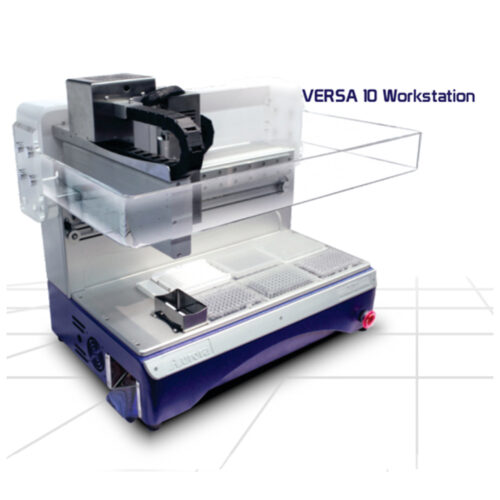
Het VERSA 10 werkstation is een compacte, kost effectieve, high throughput, automatische air-displacement vloeistof sampler.
Het systeem bied een oplossing voor de nood aan hoge doorvoer vloeistof behandelings mogelijkheden van een klein benchtop model tot een uitgebreid vloer model. Door het combineren van een 4 of 8 kanaals kop maar wel met single kanaals functionaliteit kan dit workstation de routine protocollen automatiseren met een variabele hoeveelheid aan samples. Het compacte 6positie werkplatform zorgt ervoor dat u de pipetteer protocollen kunt uitvoeren in een bio-afzuigkap of plekken met beperkte ruimte.
Dit systeem ondersteund verschillende eigen reagentia en labware door zijn open systeem en dit aan een zeer aantrekkelijke prijs.
-

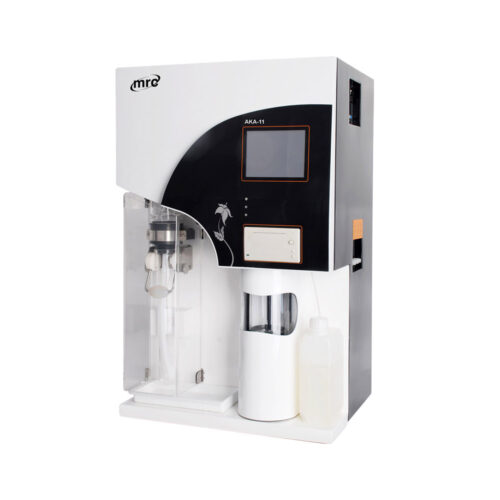
De Kjeldahl-methode is een methode geschikt om de fractie organische stikstof in samples te bepalen. De methode zal de hoeveelheid stikstof en ammoniak die in organische verbindingen vervat zit analyseren, enkel stikstof in de vorm van nitraten en nitrieten verbindingen worden genegeerd.
Deze erg oude methode is nog steeds de meest “populaire” (lees erkende) methode voor het bepalen van Stikstof in waters en voedsel samples.
Omwille van de chemicaliën en de hogere temperaturen die zich in het Kjeldahl proces voordoen is Kjeldahl lang een ongewenste gast op het labo geweest daar de nodige voorzichtigheid aangewezen is.
Vandaag zijn deze analyses bijna volledig geautomatiseerd, beveiligd en gecontroleerd zodat het gebruik van deze analyzers haast kinderspel geworden is.
